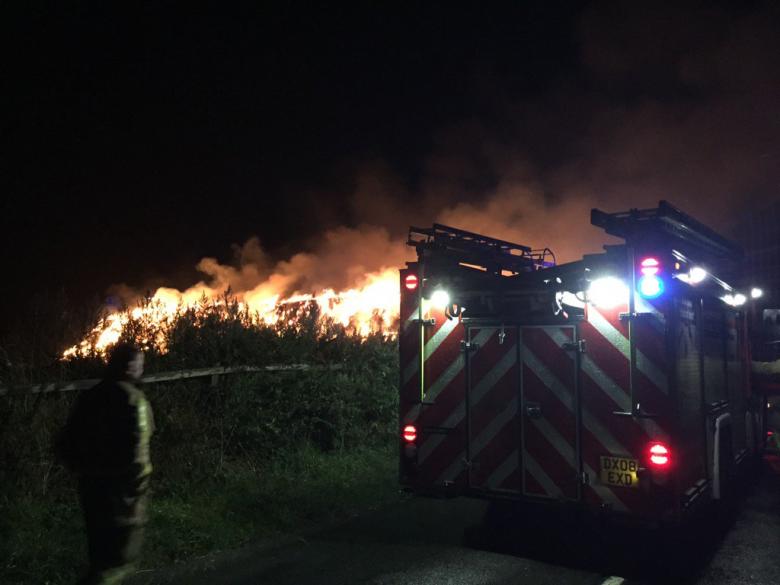
Shropshire Fire and Rescue Service have attended 10 incidents across the county in the last 10 days involving bales of straw on fire.
Some of the incidents involve large quantities of hay, with 450 bales of straw on fire at Crudgington (pictured), 300 tonnes of straw near Hodnet and 250 bales of hay smouldering in Nesscliffe. We have also attended 4 incidents involving a combine harvester, tractors and balers.
The following advice is given on the NFU Risk Management Programme:
Spontaneous Combustion
Hay that is too wet will go through a curing process (sometimes referred to as a sweat) in storage where heat is produced. To reduce the risk of spontaneous combustion consideration should be given to the following:
a) Heating can occur in hay unless it contains under 16-18% moisture. Normally, a moisture content considered safe for baling is 20% or less, but even this can result in some heating and a 5-10% loss of dry matter during storage.
b) Bale density and mass have an effect on heating. With small rectangular bales, hay can generally be safely baled at 18-20% moisture. With large round or rectangular baleshay moisture should generally be no higher than 16-18%.
c) Spontaneous combustion usually begins within two weeks of hay being placed in storage but is possible for two months. Check for temperature rises within two days of storage and monitor daily for at least 10-14 days, particularly where the hay was a little too wet or green when it went into storage.
For additional information visit the following link: -
https://www.shropshirefire.gov.uk/safety-community/farm-fire-safety-information




